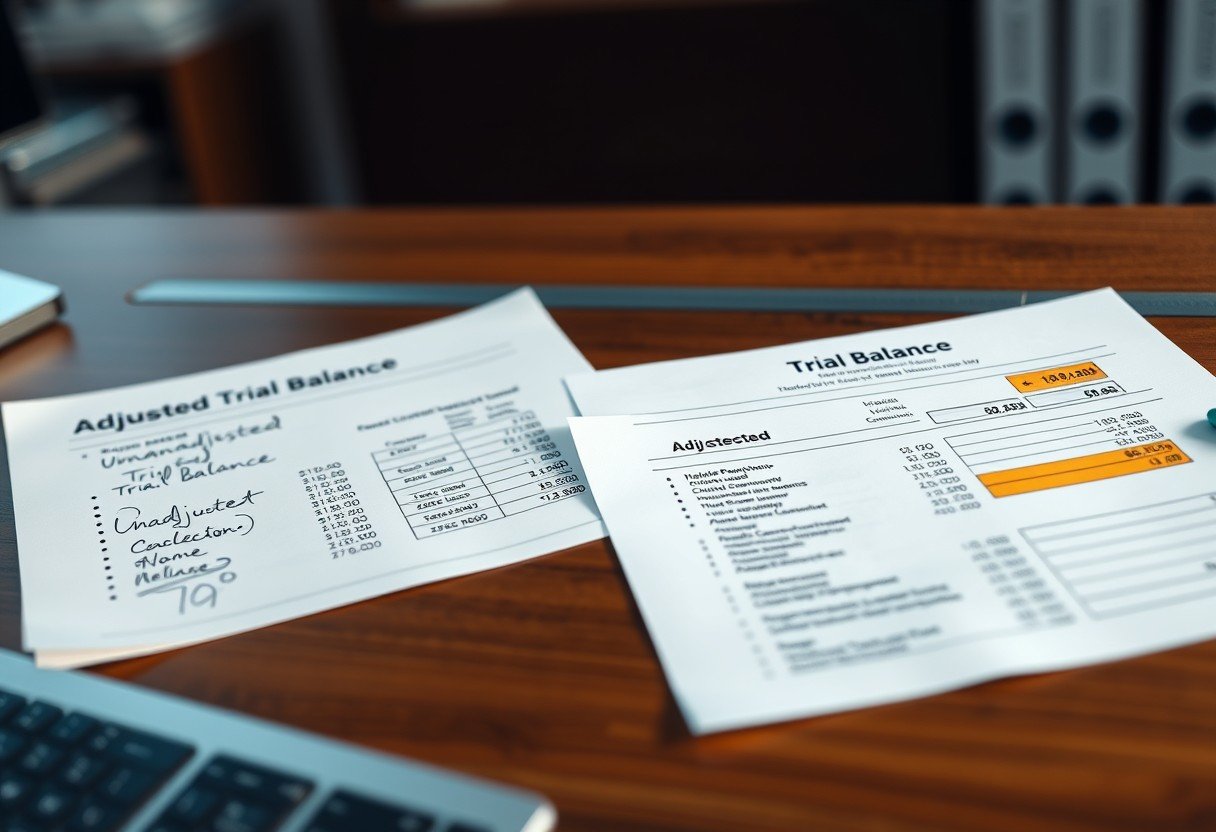In the world of accounting, accuracy is everything. A trial balance is a key tool used to check if the books are mathematically correct. However, there are two versions: the unadjusted and the adjusted. The unadjusted trial balance is the first draft, listing account balances before any end-of-period changes. The adjusted trial balance is the final version, updated with necessary corrections to give a true picture of a company’s financial health. Understanding this difference is vital for anyone involved in financial reporting.
What is an Unadjusted Trial Balance?
Think of the unadjusted trial balance as a preliminary checkpoint in the accounting cycle. It is a list of all the accounts from the general ledger and their balances at the end of an accounting period. This report is prepared before any adjusting entries are made.
Its main job is simple but crucial: to make sure that the total debits equal the total credits in the ledger. This initial check helps accountants spot any mathematical errors that might have occurred during the recording of daily transactions.
While useful for finding basic errors, the unadjusted trial balance doesn’t provide a complete or entirely accurate view of the company’s financial position. It’s simply the raw data pulled directly from your books, serving as the starting point for the period-end closing process.
What is an Adjusted Trial Balance?
The adjusted trial balance is the revised and more accurate version of the initial trial balance. It is prepared after all necessary adjusting entries have been recorded in the general ledger. These adjustments account for items that are not reflected in the daily transactions but are necessary for accurate financial reporting.
Adjusting entries are made to comply with the accrual basis of accounting, which states that revenues should be recognized when earned and expenses when incurred, regardless of when cash is exchanged. This ensures the financial statements reflect the true economic activity of the period.
This final trial balance is crucial for ensuring that all accounts reflect the most current financial activities before preparing financial statements. It provides the final, correct figures that will be used to create the income statement, balance sheet, and statement of cash flows.
Key Differences at a Glance
While both are lists of accounts with debit and credit balances, their timing, purpose, and accuracy set them apart. Understanding these distinctions is fundamental to the accounting process.
Here are the primary differences between the two reports:
- Timing: The unadjusted trial balance is prepared before adjusting entries, while the adjusted version is created after all adjustments are posted.
- Purpose: The unadjusted trial balance is mainly for verifying the equality of debits and credits. The adjusted trial balance is used to prove the equality after adjustments and serves as the direct source for preparing financial statements.
- Accuracy: The unadjusted trial balance presents raw, uncorrected data. The adjusted trial balance provides a more precise and reliable representation of a company’s financial standing.
Common Adjustments that Bridge the Gap
The process of moving from an unadjusted to an adjusted trial balance involves making specific corrections known as adjusting entries. These entries ensure that financial reports adhere to the matching principle, which requires matching revenues with the expenses used to generate them.
These adjustments typically fall into a few common categories that address timing differences between cash flow and revenue or expense recognition.
The following table outlines the most common types of adjustments:
| Adjustment Type | Description |
|---|---|
| Accrued Revenues | Revenues that have been earned but not yet received in cash or recorded. |
| Accrued Expenses | Expenses that have been incurred but not yet paid in cash or recorded. |
| Deferred Revenues | Cash received from customers before the goods or services are provided. |
| Deferred Expenses | Assets that are paid for in cash before they are used or consumed. |
| Depreciation | The process of allocating the cost of a tangible asset over its useful life. |
Correctly implementing these adjustments is essential for creating financial statements that offer a true and fair view of the company’s performance and position.
How do Trial Balances Impact Financial Statements?
The impact of each trial balance on the final financial statements is significantly different. The unadjusted trial balance is purely an internal document. It is not shared with external stakeholders like investors or lenders because it may contain incomplete or misleading information.
On the other hand, the adjusted trial balance has a direct and profound impact. The balances listed on the adjusted trial balance are the exact numbers used to prepare the primary financial statements. For example, revenue and expense account balances are used to create the income statement, while asset, liability, and equity accounts are used for the balance sheet.
Without the adjustments, financial statements would misrepresent a company’s profitability and financial health. This could lead stakeholders to make poor decisions based on flawed data, potentially harming the organization’s credibility and financial standing.
The Role in Compliance and Decision Making
For accountants and business managers, the adjusted trial balance is more than just a step in the accounting cycle; it’s a tool for sound decision-making and regulatory compliance. It ensures the company’s financial reporting follows Generally Accepted Accounting Principles (GAAP) or International Financial Reporting Standards (IFRS).
By analyzing the accurate data from an adjusted trial balance, management can evaluate operational performance, identify financial trends, and make strategic choices that align with business goals. This clarity builds trust with stakeholders, including investors, creditors, and auditors.
Ultimately, maintaining an accurate adjusted trial balance minimizes the risk of reporting errors, avoids potential regulatory penalties, and reinforces the financial integrity of the organization.
Frequently Asked Questions about Trial Balances
What is an unadjusted trial balance?
An unadjusted trial balance is a report listing all general ledger account balances before any end-of-period adjustments are made. It is used as a first check to ensure that total debits equal total credits.
What is an adjusted trial balance?
An adjusted trial balance is a report showing the balances of all accounts after adjusting entries have been posted. It provides the accurate figures needed to prepare the official financial statements.
Why are adjusting entries necessary?
Adjusting entries are needed to properly apply the accrual basis of accounting. They ensure that all revenues earned and expenses incurred are recorded in the correct accounting period, regardless of when cash changes hands.
Can the unadjusted and adjusted trial balances ever be the same?
Yes, but it is extremely rare. This would only happen if a company had no transactions during the period that required adjustments, such as accruals, deferrals, or depreciation, which is highly unlikely for most businesses.
Which trial balance is used to create financial statements?
The adjusted trial balance is the one used to prepare the income statement, balance sheet, and statement of cash flows. Its adjusted figures provide a true and fair view of the company’s financial performance and position.









Leave a Comment